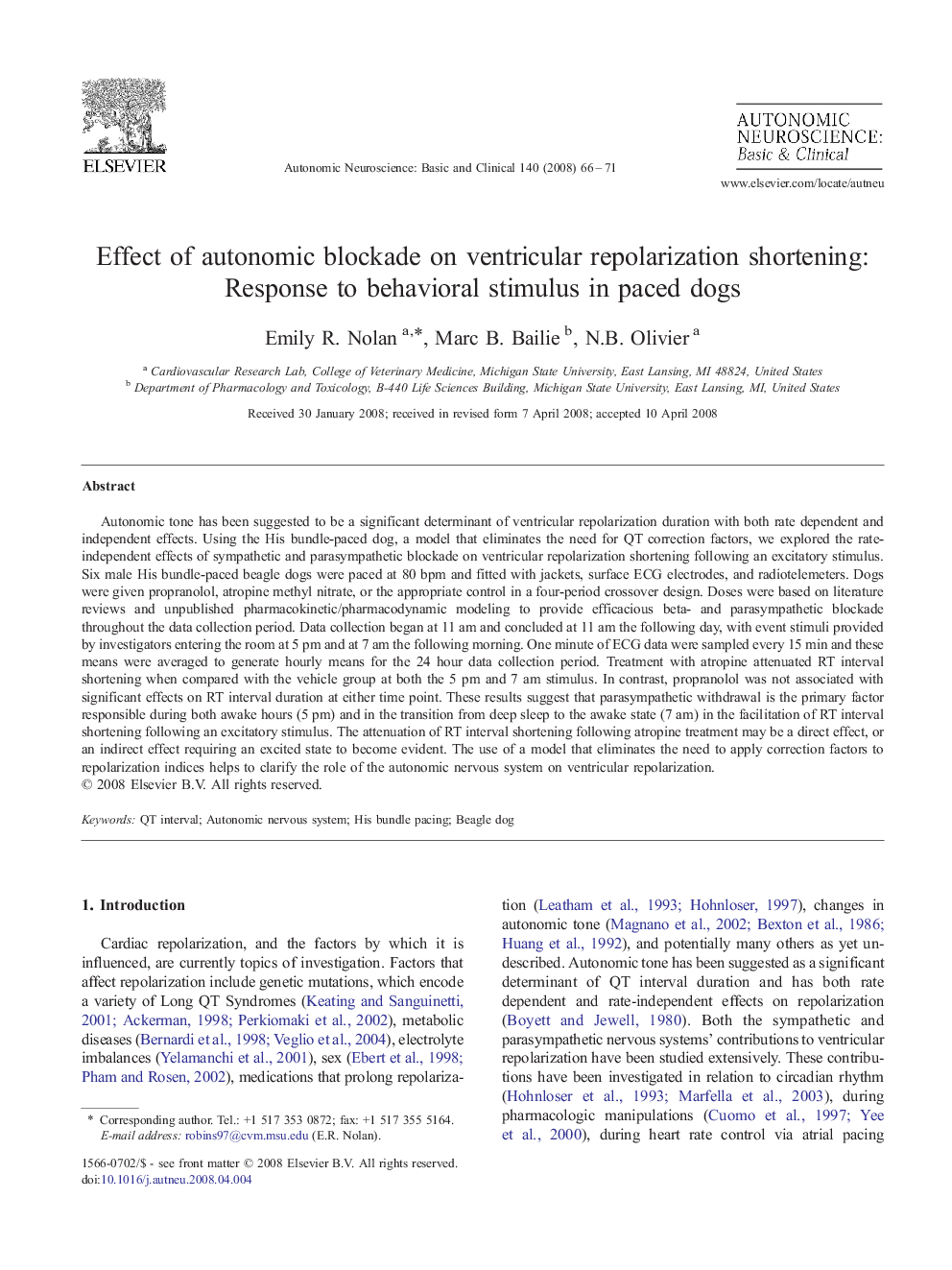| کد مقاله | کد نشریه | سال انتشار | مقاله انگلیسی | نسخه تمام متن |
|---|---|---|---|---|
| 3035434 | 1579571 | 2008 | 6 صفحه PDF | دانلود رایگان |

Autonomic tone has been suggested to be a significant determinant of ventricular repolarization duration with both rate dependent and independent effects. Using the His bundle-paced dog, a model that eliminates the need for QT correction factors, we explored the rate-independent effects of sympathetic and parasympathetic blockade on ventricular repolarization shortening following an excitatory stimulus. Six male His bundle-paced beagle dogs were paced at 80 bpm and fitted with jackets, surface ECG electrodes, and radiotelemeters. Dogs were given propranolol, atropine methyl nitrate, or the appropriate control in a four-period crossover design. Doses were based on literature reviews and unpublished pharmacokinetic/pharmacodynamic modeling to provide efficacious beta- and parasympathetic blockade throughout the data collection period. Data collection began at 11 am and concluded at 11 am the following day, with event stimuli provided by investigators entering the room at 5 pm and at 7 am the following morning. One minute of ECG data were sampled every 15 min and these means were averaged to generate hourly means for the 24 hour data collection period. Treatment with atropine attenuated RT interval shortening when compared with the vehicle group at both the 5 pm and 7 am stimulus. In contrast, propranolol was not associated with significant effects on RT interval duration at either time point. These results suggest that parasympathetic withdrawal is the primary factor responsible during both awake hours (5 pm) and in the transition from deep sleep to the awake state (7 am) in the facilitation of RT interval shortening following an excitatory stimulus. The attenuation of RT interval shortening following atropine treatment may be a direct effect, or an indirect effect requiring an excited state to become evident. The use of a model that eliminates the need to apply correction factors to repolarization indices helps to clarify the role of the autonomic nervous system on ventricular repolarization.
Journal: Autonomic Neuroscience - Volume 140, Issues 1–2, June 2008, Pages 66–71